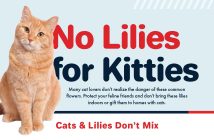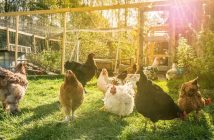Beaks, Bills, Face Knives, Beakers – whatever we want to call them, they are an integral part of our Hookbills! So, let’s break the beak down into some understandable lessons:
A. Anatomy – What is a beak?
It is not “dead” material, like hair or fingernails – rather, it is a living organ, the tip of which contains a bundle of sensitive nerves. The beak itself consists of keratin (a protein called the ramphotheca) which covers bone (the premaxilla or upper beak and mandible or lower beak). Directly above the beak is the cere, which is the soft skin containing a parrot’s nostrils. All parrots use their beak as an extra “hand,” for climbing, exploring, tasting, sensing, etc. “Beaking” is a stage of developmental growth, where young parrots learn how to use their beaks for various tasks. It serves in the role of a number of tools, such as knife, hammer, chisel, anvil, can opener, etc., but all the while retaining a high degree of sensitivity.
B. Basics – So what do we do in dealing with our bird’s beaks on a daily basis?
Most birds love having their beaks touched and rubbed and it’s a great way to bond with your parrot to touch and stroke his beak. It’s important to set guidelines on appropriate beak use, using commands like “Gentle” to let your parrot know if he’s using too much pressure. There’s nothing wrong with letting your parrot “beak” gently and appropriately on your fingers. However, that beak can also be a deadly weapon, so be cautious about letting parrots shoulder perch. If a parrot is over stimulated, it’s important to keep him down on your forearm or hand, in order to intervene on any aggressive behavior. I do not belong to the school that says “no beak on skin” – you simply need to set guidelines and pay attention to what’s going on.
C. Care – To care for your bird’s beak you need a combination of good nutrition and proper toys.
Some beak deformities can occur from improper handfeeding techniques but they can also occur from congenital problems or dietary deficiencies. It’s important to catch these problems early in order to correct them. Beak overgrowth can be a problem for parrots who don’t have enough chewable perches and toys – it can also indicate problems with protein metabolism, or liver and kidney disease. I advocate cuttlebones, mineral blocks, grooming perches, and a variety of soft and hardwood toys to keep beaks in shape. Beak trimming should rarely be necessary for birds with good diets and lots of toys, but if needed, should consist of only gentle clipping and/or filing. NEVER let anyone use a Dremel tool on your parrot’s beak (or nails) the high heat can cause nerve damage. By the same token, never let anyone talk you into beak trimming (or beak notching EVER) as a way to deal with biting. Behavior work can help with constant biting, but don’t attempt to deal with it by disabling your parrot’s beak.
Parrots use their beaks to eat, climb, play, show affection, and explore. All of this is natural and appropriate. Problems with beaks require help from an avian vet, nutritionist, or behaviorist, so it’s important to pay attention to what’s going on with your parrot’s beak on a regular basis.

Marilu Anderson, Bird Nutrition and Behavior Consultant, (503) 771-BIRD.
Marilu is a regular contributor to the Your Parrot Place Newsletter from YourParrotPlace.com – Only the Best for Your Parrot!
Free eBook: 140 pages! A compilation of parrot articles from 2000-2004.



